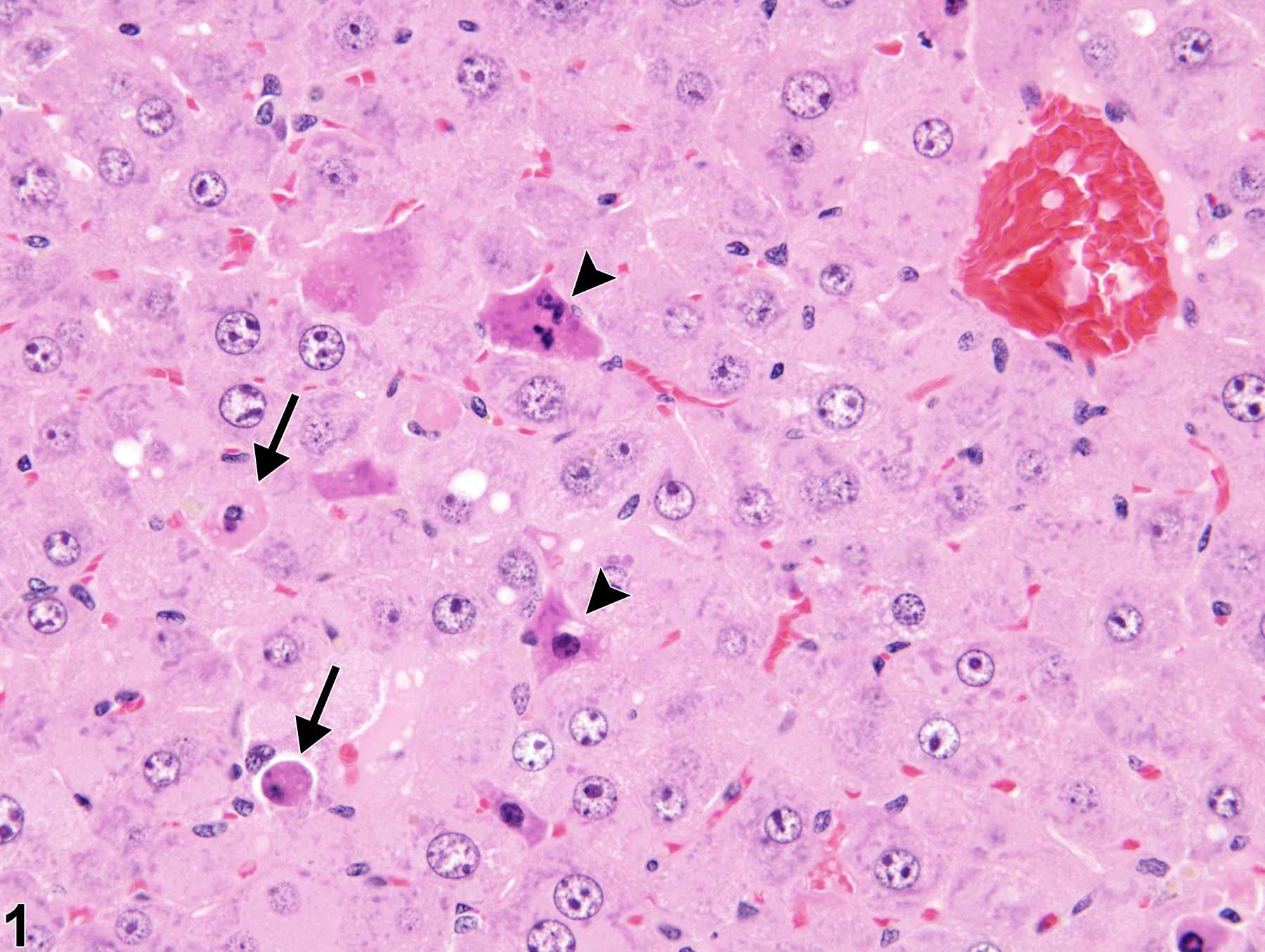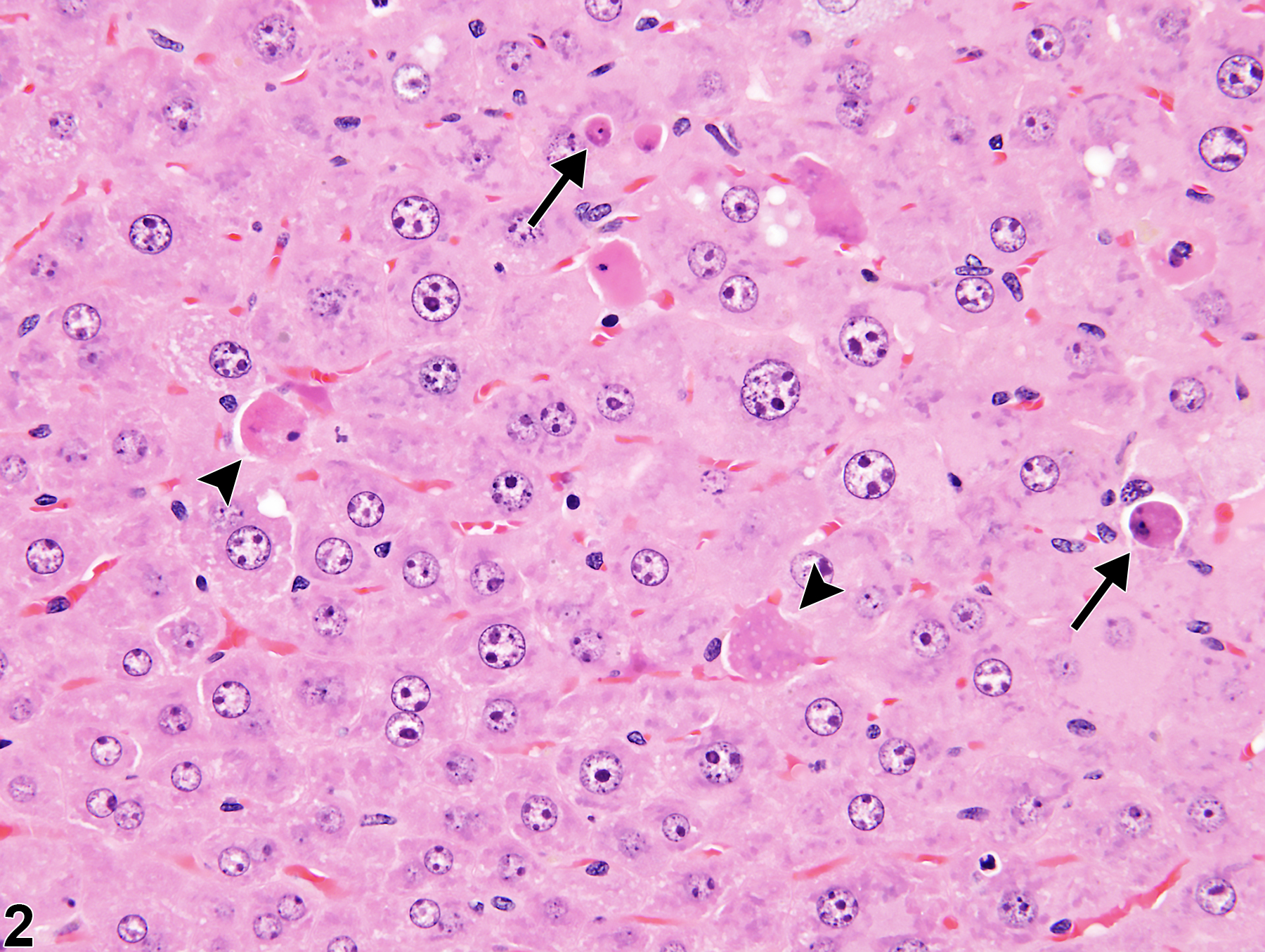Hepatobiliary System
Liver, Hepatocyte - Apoptosis
Narrative
References not listed.

Liver, Hepatocyte - Apoptosis in a male B6C3F1/N mouse from a subchronic study. There are slightly shrunken, irregularly shaped cells consistent with early-stage apoptosis (arrowheads) and smaller, rounded cells consistent with late-stage apoptosis (arrows); both have hypereosinophilic cytoplasm and small, fragmented nuclei.
All Images

Liver, Hepatocyte - Apoptosis in a male B6C3F1/N mouse from a subchronic study. There are slightly shrunken, irregularly shaped cells consistent with early-stage apoptosis (arrowheads) and smaller, rounded cells consistent with late-stage apoptosis (arrows); both have hypereosinophilic cytoplasm and small, fragmented nuclei.


